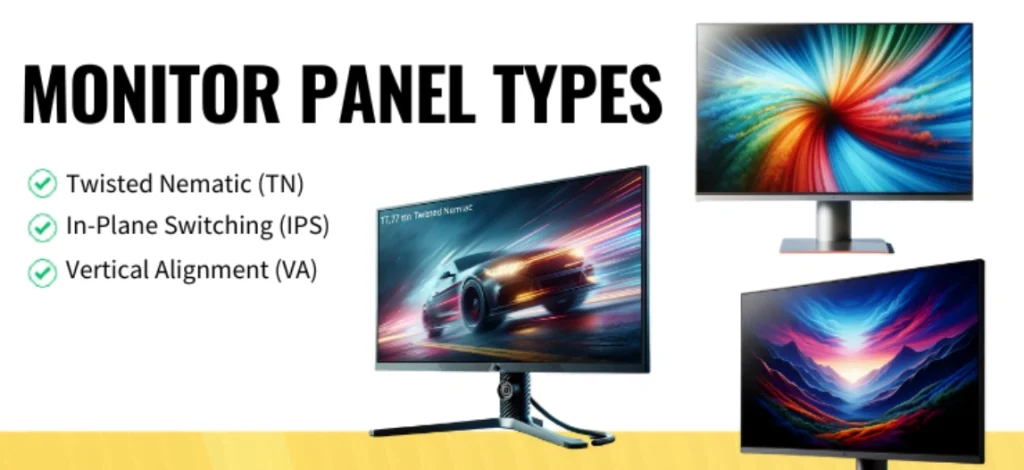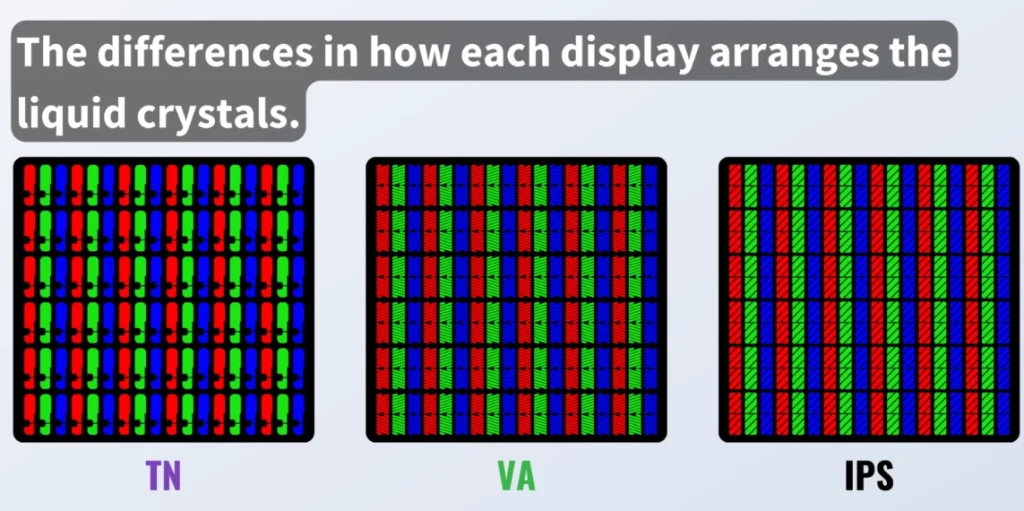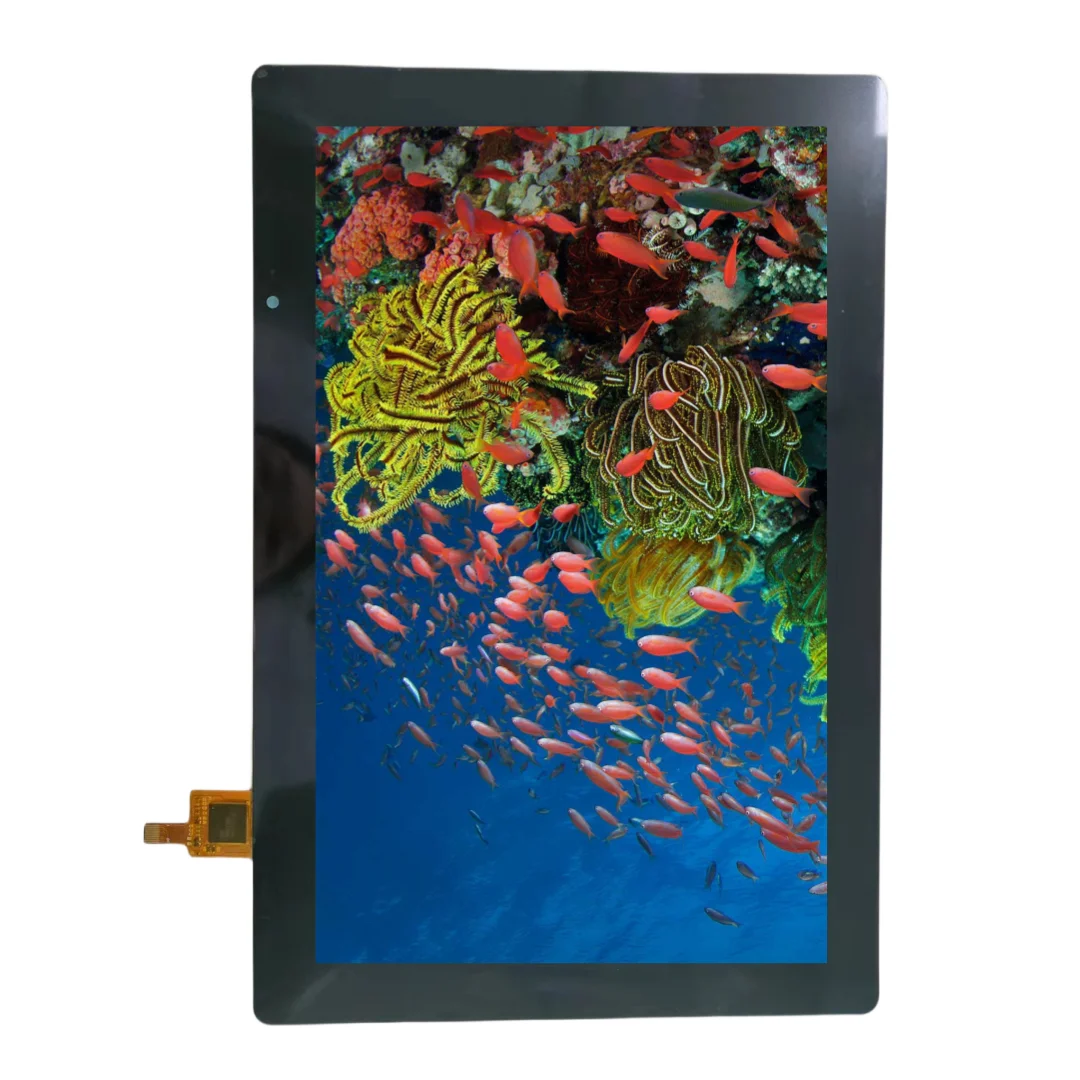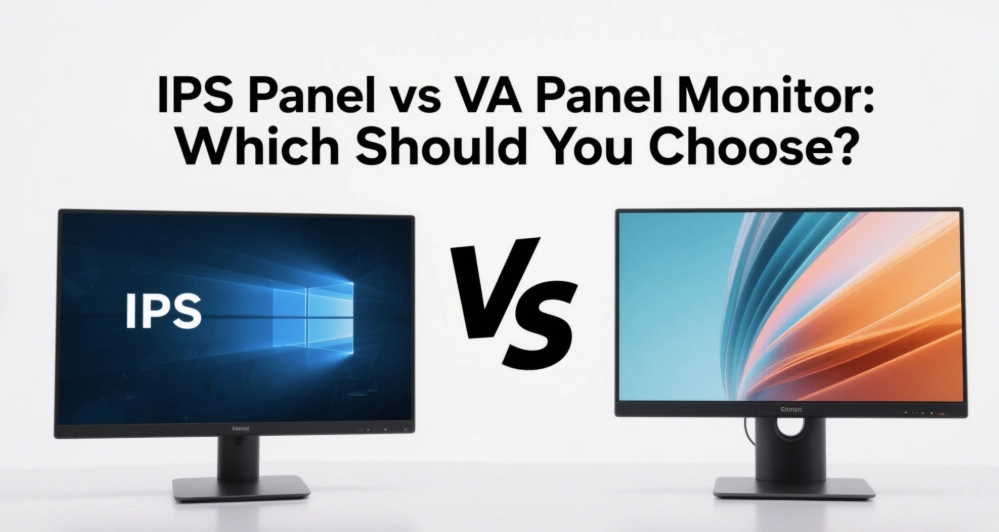Understanding the Working Mechanism of Twisted Nematic Panels
The Science Behind Twisted Nematic Technology
Twisted Nematic (TN) panels work using the special actions of liquid crystals. These panels have a layer of liquid crystal bits placed between two polarizing filters. In their normal state, the liquid crystals twist at a 90-degree angle. This lets light pass through when no power is used. When an electric field starts, the crystals untwist a bit, depending on the power level. This changes how light moves through them. As a result, it controls the brightness and color shown on the screen.
Quick response times and fast refresh rates are key features of TN panels. They are popular for tasks needing fast picture updates. However, they have weaker color correctness and viewing angles compared to other screen types.

How Liquid Crystals Function in TN Panels
Liquid crystals are the main part that makes TN panels work well. These bits act partly like liquids and partly like solid crystals. They can control light when an electric field touches them. In their twisted state, liquid crystals line up light waves to pass through both polarizers. When power is added, the untwisting changes. This controls how much light goes through the second polarizer.
This setup lets TN panels create different shades and colors by adjusting light strength for each pixel. The simple design makes them budget-friendly.
The Role of Polarizers and Backlighting in TN Displays
Polarizers are vital to ensure only correctly lined-up light reaches the viewer’s eyes. The first polarizer sorts light from the backlight, lining it up one way. After going through the liquid crystal layer, which changes light based on power, the second polarizer either blocks or lets light pass, depending on its lineup.
Backlighting is another important part of TN displays. It gives steady light across the screen. This makes pictures look bright and clear. Modern TN panels often use LED backlights. These save energy and make less heat.
Key Advantages of Using Twisted Nematic (TN) Panels
Cost-Effectiveness of TN Panels
One of the biggest benefits of TN panels is their low cost. Their easy making process makes these screens cheaper than other types like IPS or OLED. This low price makes TN panels a top pick for people and businesses wanting good screens without spending much.
High Refresh Rates and Low Response Times
TN panels are great at giving fast refresh rates and quick response times. These qualities are loved by gamers and workers dealing with fast-moving images. Response time means how fast a pixel switches from one color to another. TN panels can do this in as little as 1ms. This reduces blurry motion and ghosting. Also, refresh rates up to 240Hz make frame changes smoother. This improves the overall visual flow.
Energy Efficiency in TN Technology
Energy saving is another great feature of TN technology. These panels use less power than other screen types like IPS or VA. Their simple design and lower backlight needs help with this. As a result, they are kind to the environment. They also cut running costs over time.
Potential Limitations and Drawbacks of TN Panels
Narrow Viewing Angles and Color Shifting Issues
A big downside of TN panels is their small viewing angles. When viewed from the side, colors can look faded or wrong due to uneven light passing through the liquid crystal layer. This makes TN screens less good for group settings where many people need clear images.
Limited Color Accuracy Compared to Other Display Types
TN screens are okay for general use and gaming. However, they don’t have the color correctness of IPS or VA technologies. Their lower contrast levels lead to less bright images. Workers in fields like graphic design or video editing may find these flaws unsuitable for tasks needing exact colors.
Durability and Lifespan Considerations
TN screens are sturdy under normal use. But, long exposure to still images can cause burn-in on some older models. Also, new advances in other screen types may make traditional TN displays less strong over time.
Comparing TN Panels with Other Display Technologies

TN vs. In-Plane Switching (IPS) Panels
IPS panels are known for better color correctness and wide viewing angles compared to TN screens. But, they often have slower response times, around 4ms, and cost more to make. For users who care more about picture quality than speed—like photographers or video editors—IPS is often better.
On the other hand, gamers wanting super-fast response times may choose Twisted Nematic screens.
TN vs. Vertical Alignment (VA) Panels
VA technology gives better contrast levels than IPS and TN displays. However, it has slower response times than TN screens. VA panels offer deeper blacks and richer colors, good for watching media or general use. Yet, they may not work as well as TN displays in fast gaming due to slight input delays.
For those seeking custom solutions using advanced screen technologies like OLED or TFT LCDs, Kadi Display Customization Service offers skills backed by 20 years of experience. Kadi Display gives expert advice and custom products that meet specific client needs. They use Shenzhen’s strong supply chain strengths.
Ideal Use Cases and Applications of Twisted Nematic Panels
Gaming Monitors: Leveraging Speed and Responsiveness
Twisted Nematic (TN) panels are a top choice in the gaming world. Their quick response times and fast refresh rates make them stand out. Response time is how fast a pixel changes colors, often as low as 1ms. This cuts down on motion blur and ghosting. These features are key for competitive gaming, where even a tiny delay matters. Many gaming monitors, like the ASUS VG248QE, use TN panels to reach refresh rates of 144Hz or higher. This ensures smooth frame changes and better gaming experiences.
For gamers wanting low cost without losing performance, TN panels are a great balance. They may not offer the same color correctness or viewing angles as IPS panels. But, their low price makes them available to many people. Also, their energy-saving design lowers power use during long gaming sessions.
Office Displays: Balancing Affordability and Functionality
In work settings, TN panels are often used in office screens due to their low cost and good performance for basic tasks. These screens are perfect for jobs that don’t need exact color display or wide viewing angles, like typing, data entry, or web browsing. The low price of TN technology lets businesses set up many workstations with reliable screens without going over budget.
Also, TN panels’ energy-saving design helps lower running costs over time. This makes them a smart choice for companies wanting to save energy while keeping functionality.
Industrial Applications: Customization for Specific Needs
In industrial settings, TN panels are valued for their toughness and ability to be customized for specific needs. Kadi Display Customization Service offers special solutions for industries needing unique screen setups. For example, they can make rugged screens for tough environments or add touch features to control panels. TN technology gives the flexibility needed for different uses.
Industrial TN displays often have features like anti-glare coatings and brighter screens to ensure visibility in hard conditions. Their fast response times also make them good for real-time monitoring systems where quick updates matter.
Future Trends and Developments in TN Panel Technology
Innovations in Viewing Angle Improvements
One main flaw of TN panels is their small viewing angles. However, new designs are fixing this by using better methods to improve viewing angles without losing response times or raising costs. Makers are exploring ideas like advanced polarizer designs and better liquid crystal lineups to improve side-view image quality.
These changes aim to make TN panels more useful for different tasks while keeping their core benefits of speed and low cost.
Enhancements in Color Reproduction Capabilities
Work is happening to improve TN panels’ color display abilities. By improving liquid crystal materials and backlighting technologies, makers aim to achieve richer colors and better contrast levels. This would make TN panels more appealing for uses needing better visuals while keeping low prices.
Kadi Display Customization Service uses advances in screen technologies like TFT LCDs and OLEDs to offer custom solutions that meet specific client needs.
Emerging Markets for Customizable TN Panel Solutions
The need for flexible screen solutions is growing in new markets like wearable tech, car displays, and smart home devices. The adaptability of TN panels makes them a good choice for these uses. For example, curved or flexible TN screens could be used in car dashboards or new consumer electronics.
The rise of virtual reality (VR) and augmented reality (AR) technologies shows the need for high-performance screens that give immersive experiences. As these markets grow, continued improvements in TN panel technology will meet new consumer needs.
Frequently Asked Questions
What makes TN panels different from other display technologies?
Twisted Nematic (TN) panels stand out due to their quick response times and fast refresh rates. These features make them great for gaming and tasks needing fast image updates. However, they have smaller viewing angles and less correct color display compared to IPS or VA technologies.
Are TN panels suitable for professional graphic design or video editing?
TN screens are okay for general use. But, they lack the color correctness of IPS or VA technologies. Workers needing exact color display may find these flaws unsuitable for tasks like graphic design or video editing.
What are the latest advancements in TN panel technology?
Recent changes focus on improving viewing angles and color display while keeping low costs. Makers are also creating higher resolution options and exploring flexible designs for new markets like VR/AR devices.
What are the best settings to use for a TN panel?
To improve a twisted nematic screen’s performance:
- Adjust brightness based on room lighting.
- Calibrate colors using software tools.
- Place the screen directly in front of you to reduce distortion from small viewing angles.
- Turn on gaming modes if using the monitor for gaming.
Can TN panels be used for 3D displays?
Yes, but with limits. TN panels can support 3D technologies using active shutter glasses or polarized filters. However, their small viewing angles may affect the user experience. Other panel types like IPS may be better for immersive 3D uses due to their wider viewing angles.
Latest Blog & News
- OLED – Organic Light Emitting Diode
- Passive Matrix vs Active Matrix - A Beginner's Guide
- Which Display for Raspberry Pi Interface Optimizes Touch Control: DSI MIPI or HDMI?
- Power of Industrial TFT LCD Touch Screen: Revolutionizing Interactivity
- What’s the Difference Between Anti-Reflection and Anti-Glare?









